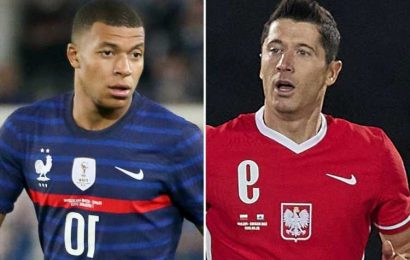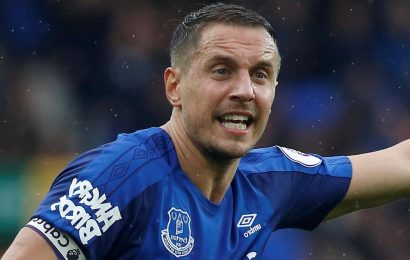The Tour de France, cycling’s most famous race, and perhaps its greatest competitive challenge, kicks off its 110th edition on Saturday.
Over three weeks, the field will traverse about 2,115 miles. It will not be fun for most of the cyclists. This year’s entrants — 22 teams of eight riders each — will open the race in Bilbao, Spain, before heading north and east through France: over the Pyrenees and the Alps (not to mention the Massif Central, the Jura Mountains and the Vosges) before finishing on July 23, a Sunday, with the traditional ride on the Champs-Élysées in Paris.
🤩 Here it is, the official route of the #TDF2023!
🤩 Voici le parcours officiel du #TDF2023 ! pic.twitter.com/QPwvs91Ar6
Maybe you are a die-hard cycling fan. Maybe you’re just a casual viewer who likes those great helicopter shots of the French countryside. Maybe you got into the sport because of the newly released Netflix documentary on last year’s race, “Tour de France: Unchained.”
Whatever brought you to the race, here’s what to know before the peloton rolls out of the starting gate this weekend.
How can I watch?
In the United States, Peacock, NBC’s streaming service, will show each stage in full, usually starting somewhere between 6 and 8 a.m., Eastern time. NBC and USA Network will sometimes broadcast the last two hours of each stage, and then air encore presentations late at night. Full details of NBC’s broadcast plans are here.
How does the Tour work?
The Tour de France consists of 21 stages held over 23 days — there are two rest days — with all but one ranging from 70 to 130 miles. (There is also one much shorter stage, an individual time trial that serves as Stage 16.) The Tour champion is the cyclist with the fastest combined time across those 21 days, and he will be easy to spot: The race leader wears the iconic maillot jaune, or yellow jersey, in each day’s stage.
What makes cycling stage races interesting — and why they are sometimes referred to as chess on wheels — is that unlike running races, which are mostly individual time trials, cycling is a team affair that features competing strategies and tactics.
Many teams are structured around a single rider who they believe can win the race’s overall title, known as the general classification. On teams like these, the other seven team members act as domestiques, or helpers, who work to protect that rider from the wind and other dangers, ferry them supplies, assist them through punishing mountain stages and chase down threatening breakaways. Other teams have more than one race contender, and will decide during the Tour which one has the best chance of victory.
But there are plenty of other prizes to compete for, too, and at any given time there are five or more competitions going on at once: among them battles for the title of best sprinter, best climber and best young rider. Then there is the pride in winning even a single day’s stage, which for many cyclists can rank as a career highlight.
Who are the favorites this year?
There are two overwhelming favorites: Jonas Vingegaard, a Danish cyclist on Team Jumbo-Visma who won last year, and Tadej Pogacar, the Slovene cyclist on UAE Team Emirates who won in 2020 and 2021. The overarching story line of this year’s race, and the battle that dictates much of the strategy, will be based around the assumption that Vingegaard and Pogacar will duke it out all the way to Paris.
If they perform as expected, the third spot on the podium will be contested by riders who aren’t quite as strong, including Enric Mas of Spain, David Gaudu of France, Jai Hindley of Australia, Richard Carapaz of Ecuador and others.
But there are plenty of other interesting stories.
Wout van Aert of Belgium and the Dutch rider Mathieu van der Poel are two of the most exciting cyclists in the world. Neither is a contender to win — the Tour de France favors riders who excel in the mountains, which they do not — but each has the ability to win multiple stages.
Walk me through the stages.
Traditionally, the competition for the yellow jersey does not really solidify until the second, or even the third, week of the tour, when those focused on the overall win bide their time and stay close to the leaders as they conserve energy for the mountain stages, where they can put some real distance between themselves and their biggest rivals.
This year’s route, however, is front-loaded with a trip through the Pyrenees, and its mountain stages are somewhat evenly spread out. That means there could be attacks to gain minutes almost immediately. The first stage, for instance, features 10,000 feet of climbing and a final, steep climb called the Côte de Pike. If a yellow jersey contender tries to ease into the Tour and his competitors do not, he could be trailing immediately.
Which stages could turn the race?
Stage 6, Tarbes to Cauterets-Cambasque: The first big uphill finish of the Tour, with three big climbs to tackle.
Stage 9, St.-Léonard-de-Noblat to Puy de Dôme: A relatively flat four hours will be capped with an explosive 30-minute climb up a lava dome, with the riders basically going straight up for the final half of the ascent.
Stage 13, Châtillon-sur-Chalaronne to Grand Colombier: Normally one would expect one of the Tour’s main contenders to win this long, tough climb up the Grand Colombier, but French riders always try to make a splash on Bastille Day.
Stage 17, St.-Gervais Mont Blanc to Courchevel: The final big day in the Alps, with more than 16,000 feet of climbing. It will be tough to dislodge whoever holds the yellow jersey at the end of this stage.
Does everyone finish?
Absolutely not. Injury, illness, fatigue and the cruel reality of time take a toll every year; 41 riders dropped out of last year’s Tour, two by Stage 5. Danger lurks around every turn as well, something riders will need no reminder of this year.
Expect to see tributes to Gino Mäder, the Bahrain-Victorious rider who died on June 16 after crashing on a descent at the Tour de Suisse. Bahrain-Victorious had planned to bring Mäder to the Tour. HIs death has sparked criticism of courses with downhill finishes, which incentivize riders to push past their limits in a final bid for time, and for the introduction of safety netting on some mountain descents. The most dangerous finish on this year’s Tour comes on Stage 14, which cyclists will complete with five miles of downhill riding into Morzine.
You mentioned a documentary?
Modeled on the Formula 1 auto racing series “Drive to Survive,” the Netflix documentary “Tour de France: Unchained” has brought a similar dramatic focus to cycling. Released this month, the eight-episode series is focused on last year’s Tour de France. Helped by inside access to most of the teams, the series explores the competition for the yellow jersey, tensions within squads, aging riders trying to hang on and what it means to be a French team at France’s most famous race.
One of the dominant story lines is the tension between Wout van Aert’s individual ambitions — he won three stages and finished second four times — and his duties as a member of Team Jumbo-Visma to help Jonas Vingegaard win the overall race. Van Aert is portrayed as an unhappy participant, but he has said he believes his story line was manufactured for drama. “It is quite disturbing that stories were placed in the documentary that weren’t there,” he said this month. “For me, the series is focused on commotion.”
Are There Any Americans to pay attention to?
Seven riders from the United States are expected to start the Tour, though none of them are team leaders or expected to compete for the overall victory.
Matteo Jorgenson, riding for Movistar, and Neilson Powless, who will ride for EF Education-EasyPost, will be active in breakaways and could be contenders for a stage win. Powless could also sneak into the top 10 overall, though he will be expected to support his team leader, Richard Carapaz.
Kevin Draper is an investigative reporter on the Sports desk, where he has written about workplace harassment and discrimination, sexual misconduct, doping, league investigations and high-profile court cases.
Source: Read Full Article







